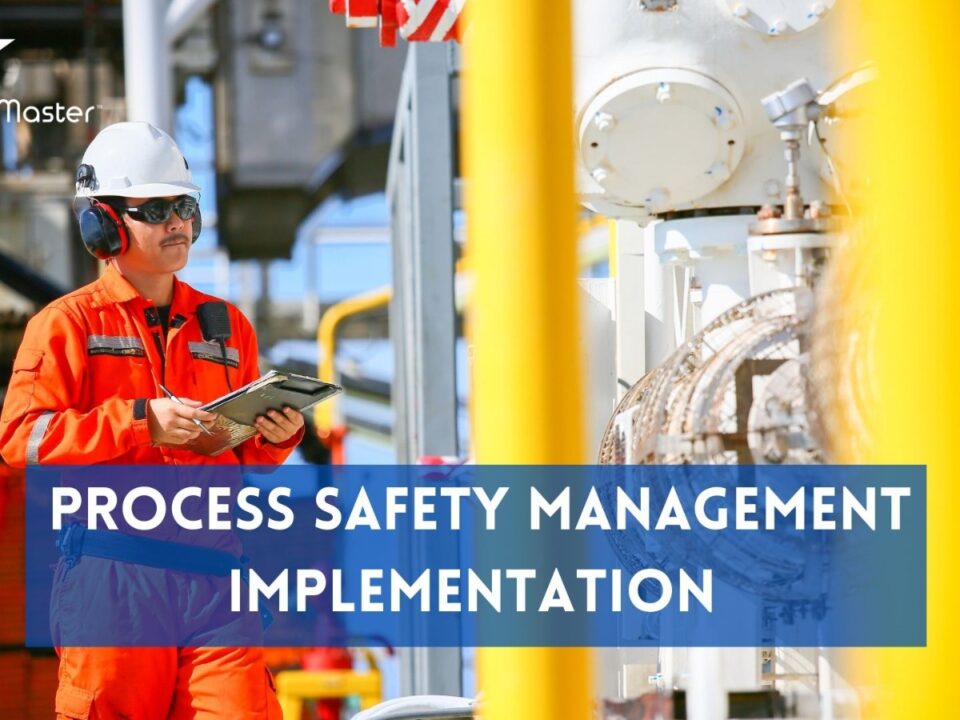Understanding the Power of Hazop Study in Industrial Process Safety by top safety consultant

Mitigating Risk in the Petrochemical Sector: Exploring HAZID Study Benefits
July 15, 2023
Why do you need a safety consultant to reduce workplace risks?
July 15, 2023Understanding the Power of Hazop Study in Industrial Process Safety by top safety consultant
Understanding the Power of Hazop Study in Industrial Process Safety by best safety consultant
In the realm of industrial process safety, one concept stands out as a powerful tool for identifying and mitigating potential hazards – the Hazop Study. With its roots dating back to the 1960s, Hazop (Hazard and Operability) Study has become an indispensable process in ensuring the safe operation of complex industrial systems. By systematically analyzing potential deviations from design intent, Hazop Study enables organizations to take proactive measures to prevent catastrophes and protect not only their employees but also surrounding communities.
The power of Hazop Study lies in its ability to comprehensively examine every aspect of a process, meticulously scrutinizing various scenarios that could lead to accidents or failures. Through brainstorming sessions involving multidisciplinary teams, this method allows for the identification of unforeseen risks and vulnerabilities that might have been overlooked during initial design or construction stages. By delving into minute details and considering different perspectives, Hazop Study empowers engineers and safety professionals to develop effective strategies for risk management.
The safety of industrial processes is of paramount importance, as the consequences of mishaps can be catastrophic. In order to mitigate risks and ensure optimal safety, industries rely on various methods and tools. One such tool that has proven to be highly effective is the Hazop (Hazard and Operability) study.
In this article, we will delve deep into the power and significance of the Hazop study in industrial process safety. We will explore how this systematic approach helps identify potential hazards, prevent accidents, and create a safer working environment. Additionally, we will discuss its role in compliance with regulatory standards and outline its economic and environmental benefits.
The Hazop Study: Unveiling Its Importance in Industrial Process Safety
The Hazop Hazard and Operability study is a vital tool in ensuring industrial process safety, serving as a proactive measure to identify potential hazards and mitigate risks before they manifest into catastrophic incidents. This meticulous examination of processes, equipment, and operating conditions allows for the comprehensive evaluation of potential deviations from the intended design and operating parameters. By uncovering vulnerabilities within complex systems, the Hazop study provides an invaluable opportunity to rectify weaknesses and prevent accidents.
Through its systematic approach, the Hazop study uncovers hidden threats that may not be apparent during initial design or even routine operations. It requires a multidisciplinary team with diverse expertise to meticulously dissect every aspect of the process under scrutiny. By challenging assumptions, exploring various scenarios, and considering both conceivable and inconceivable deviations from established norms, the Hazop study promotes innovation while safeguarding against potential pitfalls.
How Hazop Study Can Prevent Catastrophes: Real-Life Stories
The power of Hazop study in industrial process safety cannot be overstated, as it has been proven to prevent catastrophic accidents in numerous real-life scenarios. One such incident occurred at a chemical plant where a Hazop study identified a potential hazard in the storage and handling of highly reactive chemicals. By thoroughly analyzing the process, the study revealed a flaw in the design that could have led to an uncontrolled reaction and subsequent explosion.
In another case, an oil refinery underwent a comprehensive Hazop study that revealed significant risks associated with inadequate maintenance procedures for critical equipment. By highlighting these vulnerabilities, necessary improvements were made to prevent potential leaks or equipment failures, ensuring the safety of both workers and the environment.
Step-by-Step Guide to Conducting a Hazop Study for chemical Safety through Safety consultant
Conducting a Hazop study is an essential process in ensuring optimal safety in industrial settings. This step-by-step guide will provide you with a comprehensive approach to conducting a successful Hazop study:
1. Assemble a competent and diverse team: Start by assembling a team of experts from various disciplines, including process engineers, operators, maintenance personnel, and safety professionals. This multidisciplinary approach ensures that all aspects of the process are thoroughly examined.
2. Define the study objectives: Clearly define the objectives of the Hazop study, such as identifying potential hazards, assessing risks, and recommending mitigation measures. Having well-defined objectives helps keep the study focused and ensures that all necessary areas are addressed.
3. Identify the system boundaries: Clearly define the boundaries of the system under consideration for the Hazop study. This includes identifying equipment, instruments, pipelines, and interfaces with other systems. Understanding the system boundaries helps in ensuring comprehensive analysis.
4. Develop a detailed process flow diagram: Create a detailed process flow diagram that illustrates all components and their interconnections within the system. This diagram serves as an important reference during the study and aids in identifying potential deviations from normal operating conditions.
5. Break down the system into nodes: Divide the system into manageable nodes or sections based on logical units or equipment groups. This allows for focused examination of each node individually to identify potential hazards effectively.
6. Conduct brainstorming sessions
The Role of Hazop Study in Compliance with Regulatory Standards
Hazop study plays a pivotal role in ensuring compliance with stringent regulatory standards governing industrial process safety. Regulatory bodies, such as the Occupational Safety and Health Administration (OSHA) and the Environmental Protection Agency (EPA), demand that organizations adhere to rigorous safety protocols to mitigate risks and protect both workers and the environment. The comprehensive nature of Hazop study enables companies to meet these regulatory requirements with confidence.
By conducting a thorough Hazop study, organizations can identify potential hazards, evaluate risks, and develop effective safeguards to comply with regulatory standards. This proactive approach not only helps prevent accidents but also demonstrates a commitment to upholding legal obligations. Compliance fosters goodwill between industries and regulators while promoting a culture of safety-consciousness.
Advantages of Implementing Hazop Study in Industrial Settings
Implementing a Hazop study in industrial settings offers a plethora of benefits that can significantly enhance process safety and operational efficiency. Firstly, the identification of potential hazards and their root causes allows for proactive risk management and mitigation strategies to be put in place, preventing accidents before they occur. This not only ensures the safety of personnel but also protects valuable assets, minimizing downtime and production losses.
Furthermore, by systematically analyzing each element of a process through Hazop study, industries gain valuable insights into improving their operations. This includes identifying areas where inefficiencies lie, such as energy wastage or excessive material consumption. By addressing these issues, organizations can optimize their processes, leading to cost savings and increased profitability.
Overcoming Challenges in Hazop Study Implementation: HAZOP Expert Consultant Tips
Implementing a Hazop study in an industrial setting can be a complex process that requires careful planning and execution. However, by being aware of the potential challenges that may arise and following expert tips, companies can overcome these obstacles to ensure successful implementation.
One common challenge is resistance to change. When introducing a Hazop study, employees may be hesitant to adopt new procedures or embrace a different way of thinking. To overcome this hurdle, it is crucial for management to provide clear communication about the benefits of the study and involve employees in the process from the beginning. By fostering a sense of ownership and emphasizing the importance of safety, companies can create a positive atmosphere where employees feel motivated and confident in embracing the Hazop study.
Enhancing Team Collaboration and Communication in Hazop Studies
Effective team collaboration and communication are crucial elements when conducting a Hazop study for optimal process safety. In this intricate process, the input and insights from all team members play a vital role in identifying potential hazards and developing effective strategies to mitigate them.
To enhance collaboration, it is essential to foster an environment where every team member feels valued and encouraged to share their expertise. Open communication channels should be established, allowing for the free flow of ideas, concerns, and suggestions. Regular meetings and brainstorming sessions can provide opportunities for cross-functional teams to bring diverse perspectives to the table.
Assigning a dedicated facilitator can also prove beneficial in coordinating discussions during the Hazop study. This individual acts as a neutral party, ensuring that everyone’s opinion is heard without bias. Their role is not only to guide the process but also to encourage active participation from all team members.
Furthermore, utilizing visual aids such as process flow diagrams or interactive software can significantly aid in communication during Hazop studies. Clear visuals provide a common understanding of the system under examination and facilitate efficient information exchange among team members.
By fostering effective teamwork, promoting open dialogue, utilizing facilitators, and employing visual aids, collaboration can be enhanced within Hazop studies. This approach facilitates synergy among diverse skill sets while creating an optimistic atmosphere where potential hazards are addressed collectively with confidence.
The Economic and Environmental Benefits of Hazop Study
Embracing the power of Hazop study in industrial process safety not only safeguards human lives but also presents an array of economic and environmental benefits. By identifying potential hazards and implementing necessary safety measures, companies can avert costly accidents that could result in significant financial losses. The expenses associated with equipment damage, production disruptions, lawsuits, and compensation claims are all minimized through the implementation of Hazop study protocols.
Furthermore, a comprehensive Hazop study enables industries to optimize their processes and increase operational efficiency. By carefully analyzing each step in a process, potential bottlenecks or inefficiencies can be identified and rectified. This leads to streamlined operations, reduced downtime, enhanced productivity, and ultimately higher profitability.
In addition to the economic advantages, Hazop studies contribute significantly to environmental sustainability by promoting responsible manufacturing practices. By mitigating risks associated with hazardous materials or processes, companies can prevent accidental releases or pollution incidents that may harm ecosystems. This proactive approach reduces the negative impact on the environment while adhering to regulatory requirements.
Case Study: Hazop Study in Action – A Success Story
Imagine a bustling chemical plant on the brink of disaster. The potential for catastrophic accidents and devastating consequences lurked around every corner. However, thanks to the implementation of a meticulous Hazop study, this facility managed to transform its fate and emerge as a shining example of process safety.
In this case study, we delve into the captivating journey of XYZ Chemicals, a once-troubled plant that experienced a remarkable turnaround through the power of Hazop study. Facing frequent incidents and near-miss situations, XYZ Chemicals was compelled to reevaluate its safety protocols. By embarking on an in-depth Hazop study across all process units, they uncovered hidden vulnerabilities, identified critical control points, and devised robust mitigation measures.
Future Trends and Innovations in Hazop Study for Sustainable Process Safety
In the ever-evolving landscape of industrial process safety, the future holds exciting possibilities for the advancement of Hazop studies. As technology continues to advance, so does our ability to improve the efficiency and effectiveness of hazard analysis procedures. One notable trend on the horizon is the integration of artificial intelligence (AI) into Hazop studies. By harnessing AI algorithms and machine learning capabilities, Hazop analyses can be conducted more swiftly and accurately, helping industries identify potential hazards with greater precision.
Another promising innovation lies in the realm of virtual reality (VR). By creating immersive training environments through VR simulations, professionals can undergo realistic Hazop study scenarios without exposing themselves to physical risks. This not only enhances their understanding but also enables them to practice critical decision-making under various hazardous situations. Additionally, VR-based Hazop studies foster team collaboration as participants can engage in interactive discussions within a shared virtual space.
Conclusion
In conclusion, the power of Hazop Study in industrial process safety cannot be overstated. By thoroughly analyzing potential hazards and implementing effective control measures, industries can significantly reduce the risk of catastrophic events and safeguard both their workers and the environment. While challenges may arise during the implementation process, with proper teamwork, communication, and adherence to regulatory standards, these obstacles can be overcome. As we move forward into the future, it is crucial to embrace new trends and innovations in Hazop Study to ensure sustainable process safety for generations to come. With a collective commitment towards implementing Hazop Study protocols, we can create a safer working environment that fosters productivity, efficiency, and peace of mind.




